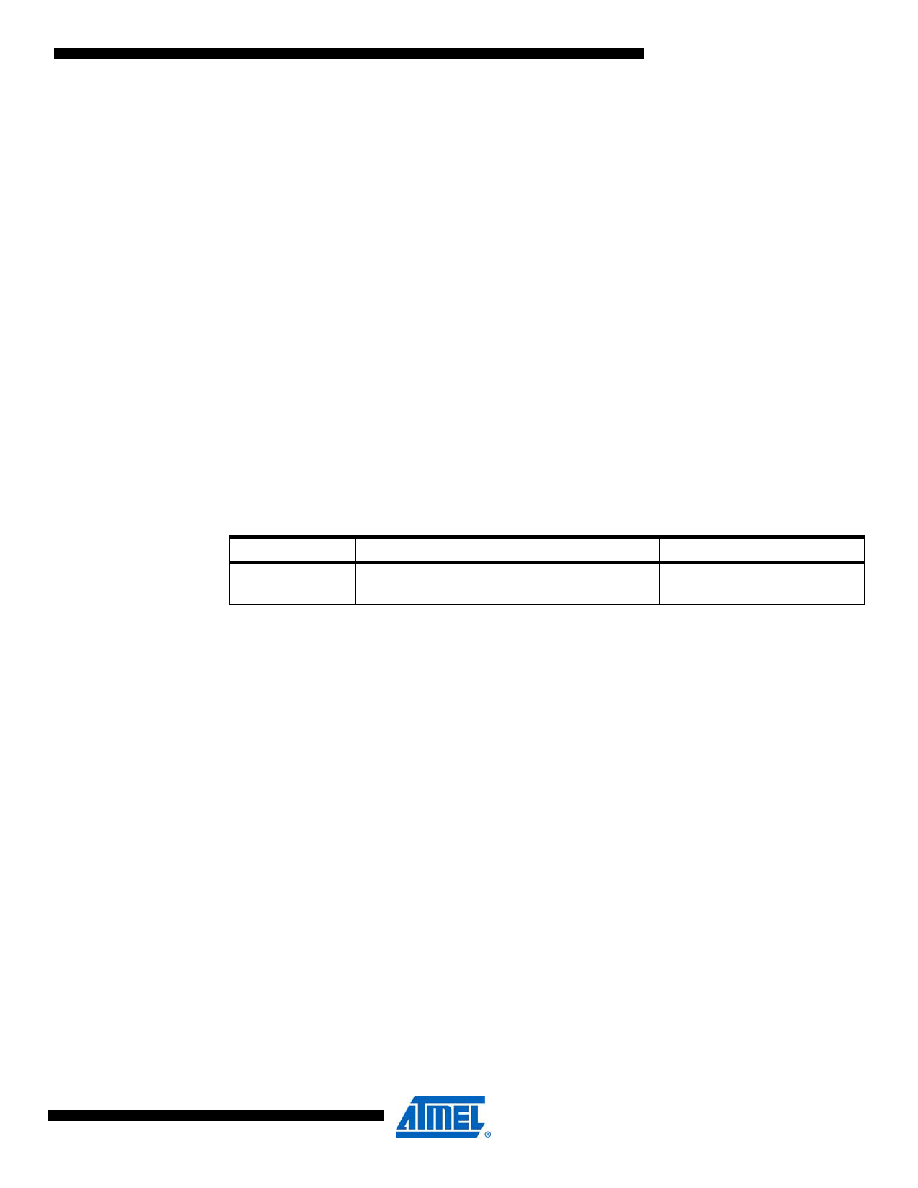- 您現(xiàn)在的位置:買賣IC網(wǎng) > PDF目錄25633 > MR80C52EXXX-12:R (TEMIC SEMICONDUCTORS) 8-BIT, MROM, 12 MHz, MICROCONTROLLER, CQCC44 PDF資料下載
參數(shù)資料
| 型號: | MR80C52EXXX-12:R |
| 廠商: | TEMIC SEMICONDUCTORS |
| 元件分類: | 微控制器/微處理器 |
| 英文描述: | 8-BIT, MROM, 12 MHz, MICROCONTROLLER, CQCC44 |
| 文件頁數(shù): | 123/326頁 |
| 文件大小: | 3228K |
第1頁第2頁第3頁第4頁第5頁第6頁第7頁第8頁第9頁第10頁第11頁第12頁第13頁第14頁第15頁第16頁第17頁第18頁第19頁第20頁第21頁第22頁第23頁第24頁第25頁第26頁第27頁第28頁第29頁第30頁第31頁第32頁第33頁第34頁第35頁第36頁第37頁第38頁第39頁第40頁第41頁第42頁第43頁第44頁第45頁第46頁第47頁第48頁第49頁第50頁第51頁第52頁第53頁第54頁第55頁第56頁第57頁第58頁第59頁第60頁第61頁第62頁第63頁第64頁第65頁第66頁第67頁第68頁第69頁第70頁第71頁第72頁第73頁第74頁第75頁第76頁第77頁第78頁第79頁第80頁第81頁第82頁第83頁第84頁第85頁第86頁第87頁第88頁第89頁第90頁第91頁第92頁第93頁第94頁第95頁第96頁第97頁第98頁第99頁第100頁第101頁第102頁第103頁第104頁第105頁第106頁第107頁第108頁第109頁第110頁第111頁第112頁第113頁第114頁第115頁第116頁第117頁第118頁第119頁第120頁第121頁第122頁當(dāng)前第123頁第124頁第125頁第126頁第127頁第128頁第129頁第130頁第131頁第132頁第133頁第134頁第135頁第136頁第137頁第138頁第139頁第140頁第141頁第142頁第143頁第144頁第145頁第146頁第147頁第148頁第149頁第150頁第151頁第152頁第153頁第154頁第155頁第156頁第157頁第158頁第159頁第160頁第161頁第162頁第163頁第164頁第165頁第166頁第167頁第168頁第169頁第170頁第171頁第172頁第173頁第174頁第175頁第176頁第177頁第178頁第179頁第180頁第181頁第182頁第183頁第184頁第185頁第186頁第187頁第188頁第189頁第190頁第191頁第192頁第193頁第194頁第195頁第196頁第197頁第198頁第199頁第200頁第201頁第202頁第203頁第204頁第205頁第206頁第207頁第208頁第209頁第210頁第211頁第212頁第213頁第214頁第215頁第216頁第217頁第218頁第219頁第220頁第221頁第222頁第223頁第224頁第225頁第226頁第227頁第228頁第229頁第230頁第231頁第232頁第233頁第234頁第235頁第236頁第237頁第238頁第239頁第240頁第241頁第242頁第243頁第244頁第245頁第246頁第247頁第248頁第249頁第250頁第251頁第252頁第253頁第254頁第255頁第256頁第257頁第258頁第259頁第260頁第261頁第262頁第263頁第264頁第265頁第266頁第267頁第268頁第269頁第270頁第271頁第272頁第273頁第274頁第275頁第276頁第277頁第278頁第279頁第280頁第281頁第282頁第283頁第284頁第285頁第286頁第287頁第288頁第289頁第290頁第291頁第292頁第293頁第294頁第295頁第296頁第297頁第298頁第299頁第300頁第301頁第302頁第303頁第304頁第305頁第306頁第307頁第308頁第309頁第310頁第311頁第312頁第313頁第314頁第315頁第316頁第317頁第318頁第319頁第320頁第321頁第322頁第323頁第324頁第325頁第326頁

21
7734Q–AVR–02/12
AT90PWM81/161
Caution: An interrupt between step 5 and step 6 will make the write cycle fail, since the
EEPROM Master Write Enable will time-out. If an interrupt routine accessing the EEPROM is
interrupting another EEPROM access, the EEAR or EEDR Register will be modified, causing the
interrupted EEPROM access to fail. It is recommended to have the Global Interrupt Flag cleared
during all the steps to avoid these problems.
When the write access time has elapsed, the EEWE bit is cleared by hardware. The user soft-
ware can poll this bit and wait for a zero before writing the next byte. When EEWE has been set,
the CPU is halted for two cycles before the next instruction is executed.
Bit 0 – EERE: EEPROM Read Enable
The EEPROM Read Enable Signal EERE is the read strobe to the EEPROM. When the correct
address is set up in the EEAR Register, the EERE bit must be written to a logic one to trigger the
EEPROM read. The EEPROM read access takes one instruction, and the requested data is
available immediately. When the EEPROM is read, the CPU is halted for four cycles before the
next instruction is executed.
The user should poll the EEWE bit before starting the read operation. If a write operation is in
progress, it is neither possible to read the EEPROM, nor to change the EEAR Register.
The calibrated Oscillator is used to time the EEPROM accesses. Table 4-2 lists the typical pro-
gramming time for EEPROM access from the CPU.
4.3.5
Program multiple bytes in one Atomic operation
It is possible to write multiple bytes into the EEPROM. Before initiating a programming
(erase/write), the data to be written has to be loaded into the temporary EEPROM page buffer.
Writing EEPAGE to one enables a load operation.
When EEPAGE bit is written to one, the temporary EEPROM page buffer is ready for loading. To
load data into the temporary EEPROM page buffer, the address and data must be written into
EEARL and EEDR respectively. Note that the data is loaded when EEDR is updated. Therefore,
the address must be written before data. This operation is repeated until the temporary
EEPROM page buffer is filled up or until all data to be written have been loaded. The number of
bytes that is loaded must not exceed the temporary EEPROM page size before performing a
program operation. Note that it is not possible to write more than one time to each byte in the
temporary EEPROM page buffer before executing a program operation. If the same byte is writ-
ten multiple times, the content in the temporary EEPROM page will be bit wise AND between the
written data (that is, if 0xaa and 0x55 is loaded to the same byte, the result will be 0x00). The
temporary EEPROM buffer will be ready for new data after the program operation has com-
pleted. Alternatively, the temporary EEPROM buffer is flushed and ready for new data by writing
EEPE (within four cycles after EEMPE is written) if the EEPMn bits are 0b11. When the tempo-
rary EEPROM buffer is flushed, the EEPAGE bit will be cleared. Loading data into the temporary
EEPROM buffer takes three CPU clock cycles. If EEDR is written while EEPAGE is set, the CPU
is halted to ensure that the operation takes three cycles.
Table 4-2.
EEPROM programming time.
Symbol
Number of calibrated RC oscillator cycles
Typical programming time
EEPROM write
(from CPU)
26368
3.3ms
相關(guān)PDF資料 |
PDF描述 |
|---|---|
| MR80C52EXXX-25:D | 8-BIT, MROM, 25 MHz, MICROCONTROLLER, CQCC44 |
| MQ80C52XXX-12/883:R | 8-BIT, MROM, 12 MHz, MICROCONTROLLER, CQFP44 |
| MQ80C52XXX-36:D | 8-BIT, MROM, 36 MHz, MICROCONTROLLER, CQFP44 |
| MR80C32E-12SB | 8-BIT, 12 MHz, MICROCONTROLLER, CQCC44 |
| MR80C52TXXX-30/883:R | 8-BIT, MROM, 30 MHz, MICROCONTROLLER, CQCC44 |
相關(guān)代理商/技術(shù)參數(shù) |
參數(shù)描述 |
|---|---|
| MR80C86 | 制造商:INTERSIL 制造商全稱:Intersil Corporation 功能描述:CMOS 16-Bit Microprocessor |
| MR80C86/B | 制造商:Rochester Electronics LLC 功能描述:- Bulk 制造商:Harris Corporation 功能描述:Microprocessor, 16 Bit, 44 Pin, Ceramic, LCC |
| MR80C86-2 | 制造商:INTERSIL 制造商全稱:Intersil Corporation 功能描述:CMOS 16-Bit Microprocessor |
| MR80C86-2/883 | 制造商:Rochester Electronics LLC 功能描述:- Bulk |
| MR80C86-2/B | 制造商:Intersil Corporation 功能描述:MPU 80C86 16BIT CMOS 8MHZ 44PLCC - Rail/Tube |
發(fā)布緊急采購,3分鐘左右您將得到回復(fù)。